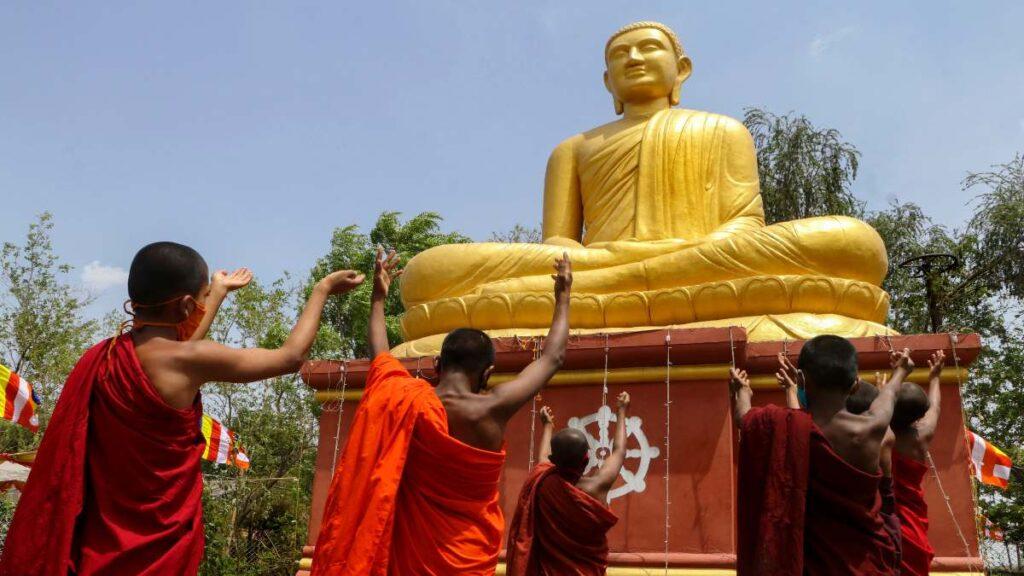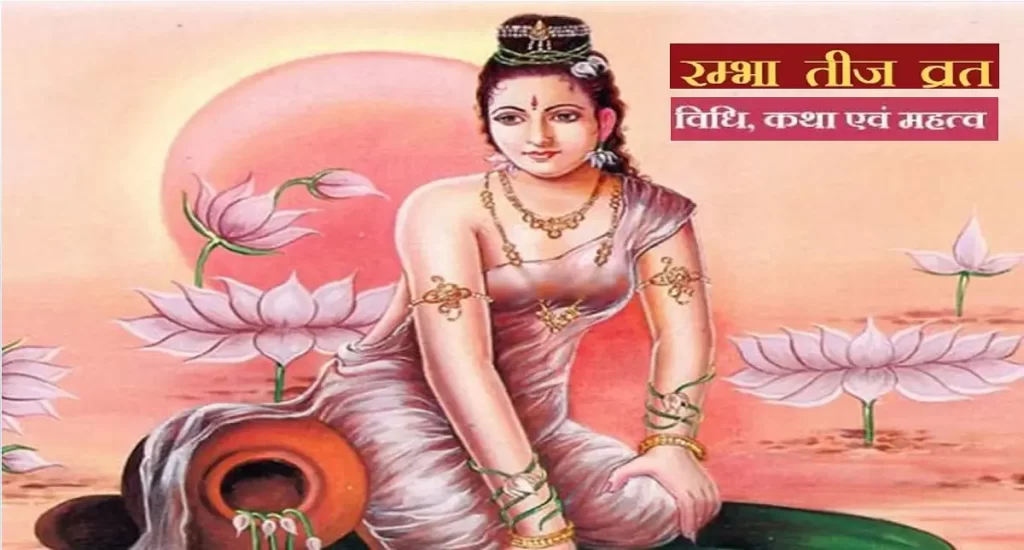May (Vaishakh-Jyeshtha)
Budha Jayanti

Buddha Jayanti or ‘Buddha Purnima’ is celebrated in India, Nepal and Bangladesh. Gautam Buddha is considered one of the greatest spiritual leaders the world has ever seen.. He is also revered as the 9th ‘avatar’ of Lord Vishnu himself.
The founder of Buddhism, the religious and philosophical system that has produced a great culture throughout much of southern and eastern Asia, Gautam Buddha’s message initially spread from India and was soon assimilated into many foreign cultures. Buddha Purnima marks birthday as well as death anniversary of Lord Buddha.
Buddha Purnima or Buddha Jayanti is the greatest festival of Buddhists all over the world. Buddha Purnima memorializes and celebrates the birth, enlightenment and death of Lord Buddha. It is believed that Lord Buddha was born and left the world on the same date after living for eighty years. It is celebrated on the full moon day of the Vaishakha, a month in the Hindu calendar.Buddha Jayanti is celebrated on Vaishakh Purnima at sun rise. If Vaishakh Purnima falls at sun rise on two days or does not fall at Sun Rise on any day then it is celebrated on the first day.
Devotees and pilgrims from all over the world celebrate Buddha Purnima to celebrate Gautam Buddha’s teachings of life. Buddha Purnima is celebrated everywhere and in Bodh Gaya, pilgrims from all around the world come on this occasion. Prayers and sermons are held and processions are taken out that day. Group meditation is done and people worshipping the statue of Buddha fill in the environment with complete devotion and dedication.
The temples are decorated with flags and flowers and the Mahabodhi temple wears a festive and elegant look that day. People recite the preaching of Lord Buddha that day and try to make resolutions to follow them as much as they can. The government of India announces holiday on this day.
Rambha Tritiya Vrat

Ramba Trtiya, or Rambha Trithiya, is observed mainly in North India on the third day of the Shukla Paksha (waxing phase of moon) in the month of Jyeshta (May – June). The day is dedicated to the Apsara Rambha who had emerged from the ocean during the famous Samudra Manthan – Churning of ocean.
Rambha, the Apsara, who symbolically represents womanly loveliness and amiability, is one of the 14 gems that came out from the ocean during Samudra Manthan or Churning of Ocean. Ramba Tritiya is dedicated to Sati Savitri Mata. The vrata is performed on Shukla Paksha Tritiya in Jyeshta month. Savitri Puja is the main ritual to observe on this day, The legend of this fast is mentioned in the Skanda Purana. Goddess Parvati kept this fast to get Lord Shiva as her husband. Married women perform this vrata under the banana tree to get its fullest merits.
Women worship a pair of bangles which respresent apsara Rambha and goddess Lakshmi.
Aranya Shashthi

Aranya Sashti, or Aranya Shashti is observed on the sixth day of the waxing phase of moon in the month of Jyeshtha (May – June) as per traditional Hindu calendar. It is dedicated to the forest God and also to Goddess Sashti and Kartikeya. There is a popular belief that those who observe Aranya Sashti will be blessed with children.
Women observe a partial fast on the day and perform pujas in a forest or under Kadamba Tree. Goddess Shasti is worshipped on the day and offerings are made on a traditional hand-fan. Women only eat fruits on the day. In some regions women tie a thread around the wrist.The prayers that are offered on the day are the Aranya Suktam from Rg Veda.
In Bengal, the day is observed as Jamai Sasthi. The famous Shiva – Pravati Vivah is held on the day in Orissa and is known as Sitala Sashti.
Ganga Dashahara

Jyeshtha Shukla Dashami was the day when Ganga reached the Earth and answered Bhagirathi’s prayers. Ganga Dusshera is celebrated on the same day when Ganga reached the Earth. Ganga stotra named Dusshera is included in Skanda Purana.
A person should make sure that whatever he donates on this day should be ten in number. He should also remember that the ingredients with which he worships should also be ten in number.
Sagar was Ayodhya’s king in the ancient times. He had six thousand sons. Once he performed an Ashwamedh yagya and freed the horse involved with the yagya. King Indra wanted this yagya to be unsuccessful and therefore, hid the horse in Saint Kapil’s asylum. King Sagar’s sons found the horse in the asylum and thought it was stolen. This distracted Saint Kapil from his austerities and as soon as he opened his eyes, all the sons of King Sagar were burnt to ashes.
King Sagar, Anshumaan and Dilip prayed so that the souls of these dead sons could rest in peace. They even tried to bring Goddess Ganga to earth but did not succeed. As a result, they sacrificed their lives. They wanted to bring Ganga to the Earth as Saint Agastya drank all the water and there was no river left which could bring the souls to peace. Maharaja Dilip’s son, Bhagirathi prayed and offered his austerities to Lord Brahma. Lord Brahma was impressed by his devotion and blessed him with a wish. Bhagirathi asked for river Ganga as he wanted the souls of his ancestors to rest in peace. Lord Brahma granted his wish but warned him that river Ganga’s rapid flow could even lead to destruction. He suggested that Bhagirathi could take help from Lord Shiva regarding this problem.
Bhagirathi stood on one leg and started worshipping Lord Shiva. Lord Shiva was impressed with Bhagirathi’s devotion and agreed to decrease the flow of river Ganga through his hair. He withheld the river’s force and directed it towards Earth. This way, Bhagirathi was able to bring peace to the souls of his dead ancestors.
This festival is celebrated on Jyeshtha Shukla Dashami falling during Purvahana (before Noon). If there is Adhikmaas (extra month) then it is celebrated in Adhikmaas only.
According to Skanda Purana, a person should take bath in a holy river on this day. He should visit a religious place and make donations. This frees him of all the sins. If a person is unable to visit a religious place, he should take a bath in a nearby river.
When river Ganga incarnated on earth that occasion was obliged with rare ten vedic astrologic calculations. Jyeshtha month, Shukla Paksha (bright half), Tenth date, Wednesday, Hasta Nakshatra, Vyatipata yoga, Gar Anand Yog and Moon in Virgo and Sun in Tauras, these all ten Yogas absorb all the ten sins by merely take a bath in river Ganga on Ganga Dussehra.
Nirjala Ekadashi

Nirjala Ekadashi is considered as the, most sacred of ekadashis. If observed religiously, it is said the most rewarding and granting the virtue gained by the observance of all 24 ekadshis in the year
Nirjala Ekadashi falls on the Shukla paksha in the month of Jyestha. It is also called “Jyeshtha Shukla Ekadashi” or “Bhimsaini Ekadashi”. It is considered as one of the most rewarding fast.
The greatness of Nirjala Ekadasi was explained by Sage Vyas-It is equal to going on pilgrimage.It provides virtue of all 24 EkadashiIt washes away all sin.It grants happiness, prosperity, longevity and moksha (salvation).
This Ekadasi happens before monsoon season and therefore it is also helps in cleansing the body.
Nirjala Ekadashi is celebrated on Jyeshtha Shukla Ekadashi falling at sun rise. If this Ekadashi falls at Sun rise on two days or does not fall during Sun Rise in that situation it is celebrated on the first day.
Nirjala means without water. Hence, fast is observed without water and food. It is considered as the most strict and hence, most sacred of all Ekadashis.. People fast and offer puja to Lord Vishnu on this day.
Chant bhajans, Vishnu Sahasranama and other slokas dedicated to Lord Vishnu Donate clothes, food grains, umbrellas, hand-fans, pitchers filled with water, gold etc.
